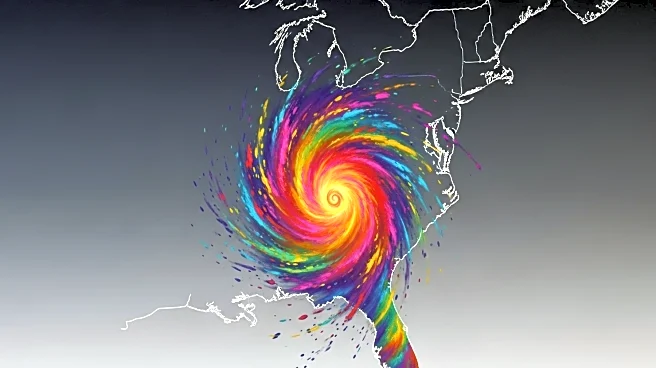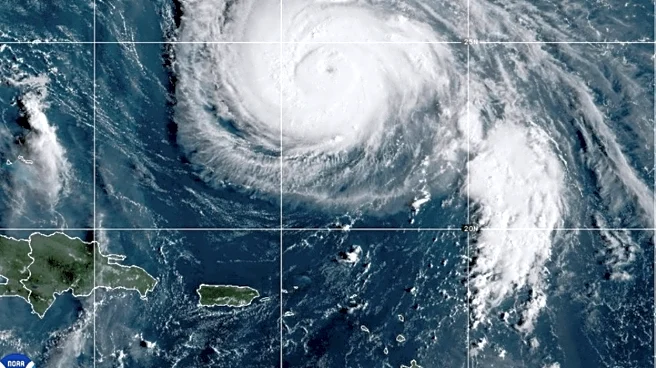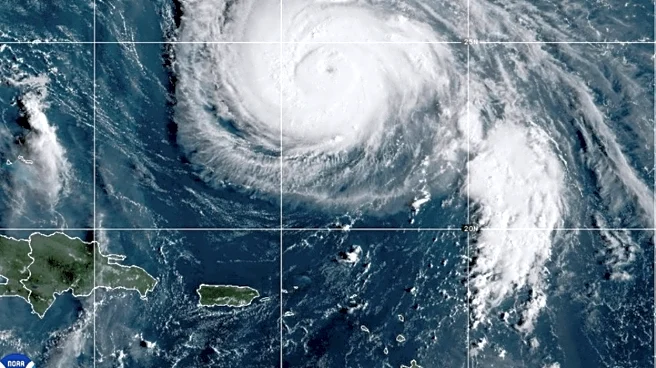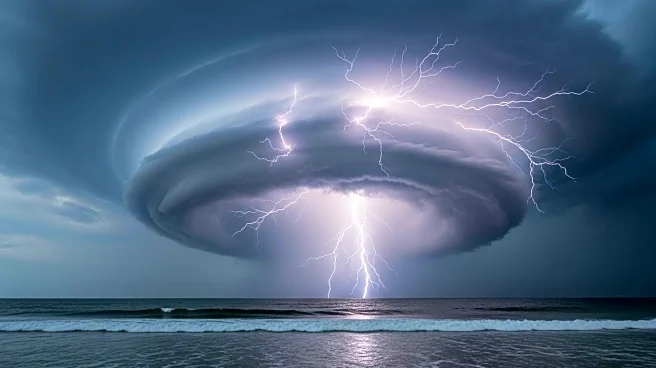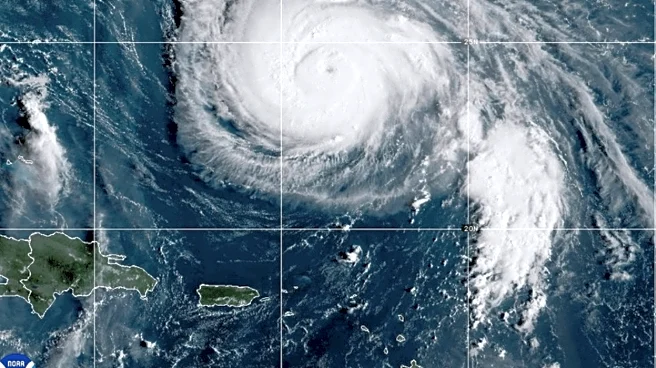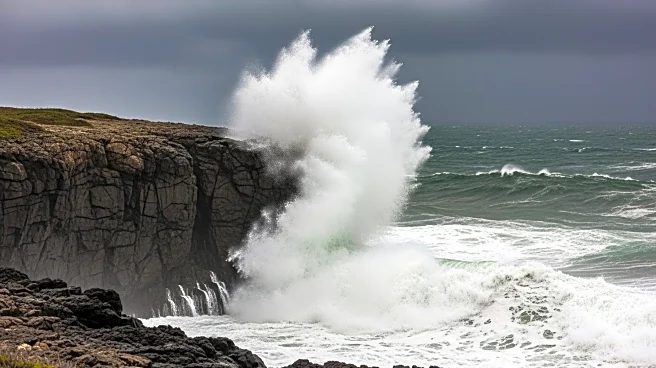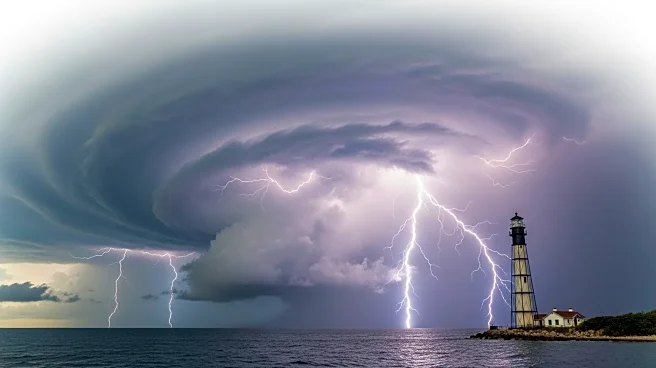What is the story about?
What's Happening?
Meteorologists are closely monitoring two hurricanes, Imelda and Humberto, in the Atlantic Ocean, which are exhibiting a rare Fujiwhara effect. This phenomenon occurs when two cyclones come close enough to influence each other's paths, potentially causing them to spin around a midpoint. Hurricane Humberto, a Category 4 storm, is moving towards Bermuda with sustained winds of 155 mph, while Tropical Depression Nine, expected to become Hurricane Imelda, is approaching the Florida and Carolinas coast. The interaction between these storms could result in Imelda being flung northeast out to sea or lingering near the U.S. coast, posing significant threats of heavy rainfall and flooding.
Why It's Important?
The potential Fujiwhara effect between Imelda and Humberto highlights the increasing complexity and intensity of hurricane systems, exacerbated by climate change. Warmer ocean temperatures are fueling stronger storms, leading to more severe weather events. The situation poses significant risks to the southeastern U.S., with forecasts predicting heavy rainfall and possible life-threatening flooding. The governors of South Carolina and North Carolina have declared emergencies, preparing for potential impacts. This event underscores the need for improved forecasting and preparedness strategies in the face of more frequent and intense hurricanes.
What's Next?
As the storms continue to develop, meteorologists are conducting additional research flights to gather data on their interactions. The National Hurricane Center is closely monitoring the situation, with forecasts suggesting that Humberto's influence could steer Imelda away from the U.S. coast. However, if Imelda stalls or moves slowly, it could result in prolonged rainfall and flooding in the Southeast. Residents in the affected areas are advised to stay informed and prepared for potential impacts, as the situation remains fluid and subject to change.
Beyond the Headlines
The interaction between Imelda and Humberto serves as a reminder of the broader impacts of climate change on weather patterns. The increasing frequency of intense storms raises questions about the adequacy of current hurricane classification systems and the need for more comprehensive risk communication strategies. As climate change continues to alter weather dynamics, there is a growing need for adaptive measures to mitigate the impacts of extreme weather events on vulnerable communities.
AI Generated Content
Do you find this article useful?




